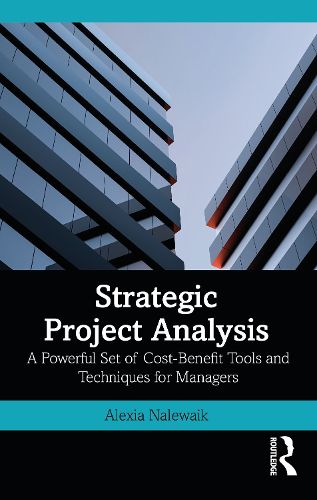Readings Newsletter
Become a Readings Member to make your shopping experience even easier.
Sign in or sign up for free!
You’re not far away from qualifying for FREE standard shipping within Australia
You’ve qualified for FREE standard shipping within Australia
The cart is loading…






The forming, funding, approval, and planning of a project are key factors in its future success or failure. This book explains the use of strategic project analysis, and advocates for a closer relationship between economic analysis and project evaluation and provides real-world examples of major projects that have used this method.
The primary quantitative method for decision-making in project selection is cost-benefit analysis. However, the method has well-known flaws and challenges. Using the principles of stakeholders, risk, ethics, and bias, the book presents a rationale for broadening traditional project analysis to include both quantitative and qualitative methods. The identification of sustainability and resilience benefits and hidden value are highlighted as an equally important factor in assessing projects.
Written in a clear and accessible style with straightforward maths, this book is invaluable to project owners, decision-makers, and management professionals seeking broader tools to evaluate strategic projects, as well as students of project management.
$9.00 standard shipping within Australia
FREE standard shipping within Australia for orders over $100.00
Express & International shipping calculated at checkout
The forming, funding, approval, and planning of a project are key factors in its future success or failure. This book explains the use of strategic project analysis, and advocates for a closer relationship between economic analysis and project evaluation and provides real-world examples of major projects that have used this method.
The primary quantitative method for decision-making in project selection is cost-benefit analysis. However, the method has well-known flaws and challenges. Using the principles of stakeholders, risk, ethics, and bias, the book presents a rationale for broadening traditional project analysis to include both quantitative and qualitative methods. The identification of sustainability and resilience benefits and hidden value are highlighted as an equally important factor in assessing projects.
Written in a clear and accessible style with straightforward maths, this book is invaluable to project owners, decision-makers, and management professionals seeking broader tools to evaluate strategic projects, as well as students of project management.